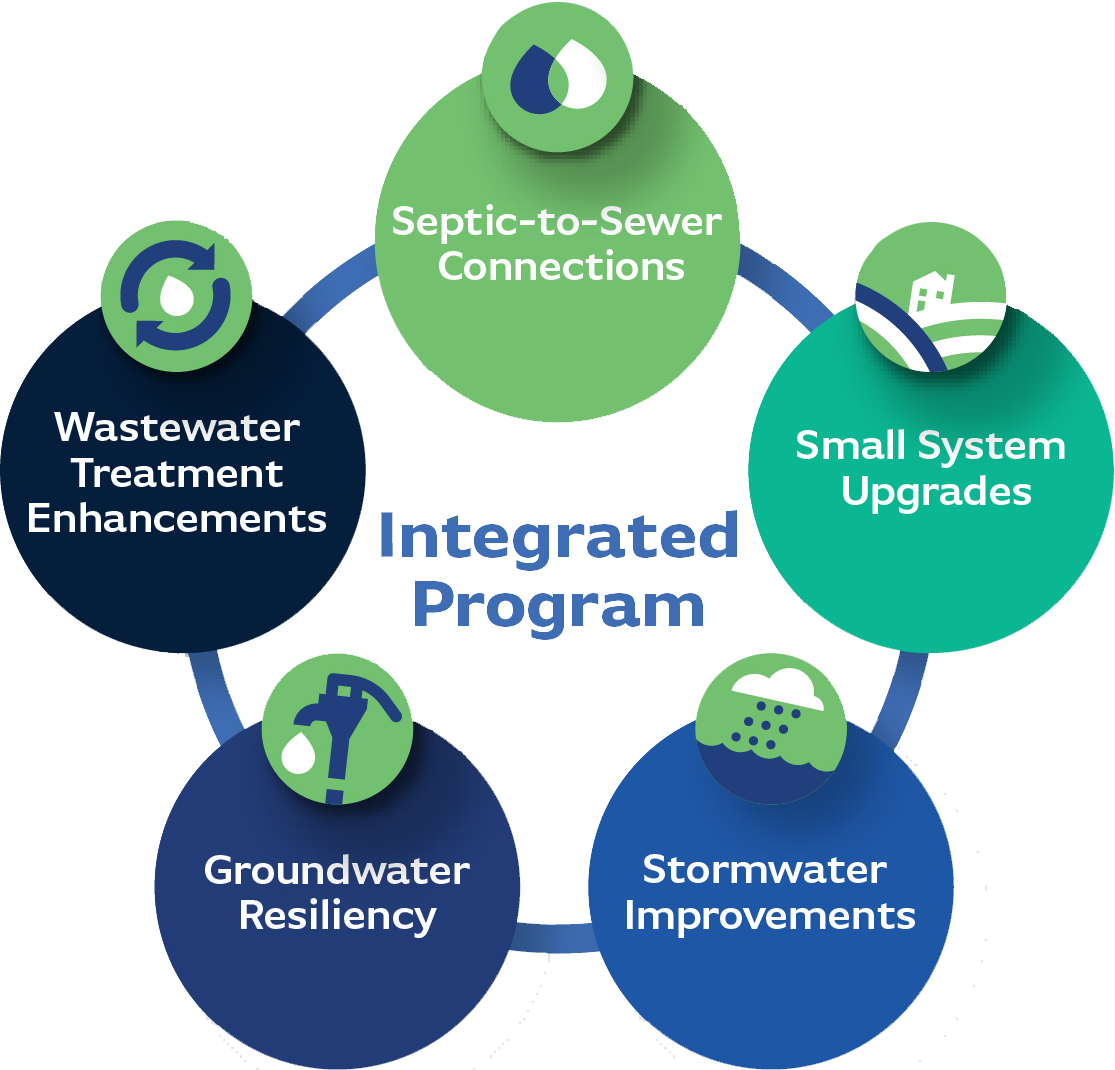Our Water, Our Future

If you've found your way to this blog post, chances are you care about the Chesapeake Bay. Beyond that, you're probably concerned about its health. At the Department of Public Works, we're working diligently to preserve the Bay and restore its quality and we want to share our plans with you. To meet water quality goals, we’ve launched Our wAAter, an integrated program developed in accordance with guidelines from the Maryland Department of the Environment and the U.S. Environmental Protection Agency. This long-term strategy is made up of five components:
Septic-to-Sewer Connections. Anne Arundel County has more than 40,000 septic systems, which are a significant source of nitrogen pollution. Overall, traditional septic systems are not as effective at removing nitrogen as the County’s water reclamation facilities, and even properly working septic systems can release up to eight times as much nitrogen pollution into waterways than the County’s treatment facilities. To reduce the amount of nitrogen pollution from septic systems, we have developed a program to reduce the costs of connecting to the County’s public sewer system. We began sharing information with residents in eligible communities last year and will continue these conversations this year. Want to learn more? Check out these frequently asked questions.
Small System Upgrades. Many small communities are served by privately owned treatment plants, which face challenges in meeting and supporting the County’s water quality goals. DPW will work with these areas to find cost-effective ways to improve wastewater treatment or connect them to a County-owned water reclamation facility.
Stormwater Improvements. When rain flows down streets and sidewalks, it picks up pollutants like pet waste, detergent, and fertilizer and carries them into our waterways. The Bureau of Watershed Protection and Restoration works diligently to lessen the impact of stormwater on water quality, and as of 2021 had completed 800 stormwater infrastructure repair projects. The County had achieved over 100% of the restoration requirements under its current permits, with the rest of the required work in the procurement, design, and construction pipeline. Work continues with the expectation that it will be applied towards future permit obligations. Learn more about the Bureau of Watershed Protection and Restoration’s ongoing work to reduce stormwater pollution here.
Groundwater Resiliency. All of the County's drinking water currently comes from underground aquifers. But our consumption is outpacing the rate that these underground aquifers naturally recharge. We have been exploring innovative approaches to replenish groundwater supplies and provide clean, safe water well into the future.
Wastewater Treatment Enhancements. Nearly all of our water reclamation facilities have enhanced nutrient removal technology, which means we can remove more pollutants from treated wastewater before it is discharged to local waterways. Thanks to these upgrades, we’ve reduced nitrogen load by 50 percent over the past decade and we’ve exceeded State requirements for nutrient removal. Continued investments in wastewater treatment upgrades mean a cleaner, healthier Bay.
Our future depends on our water. This plan will guide our actions as we work to protect both.
